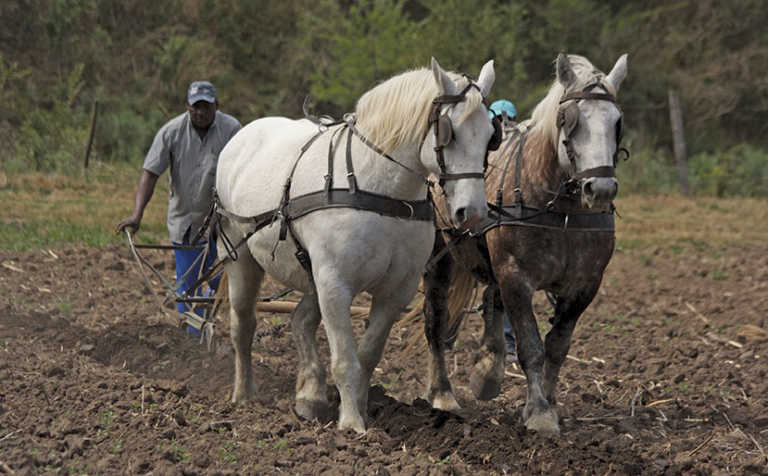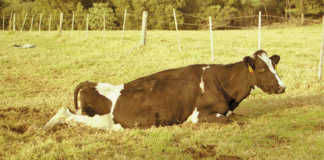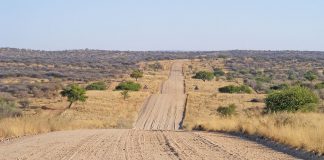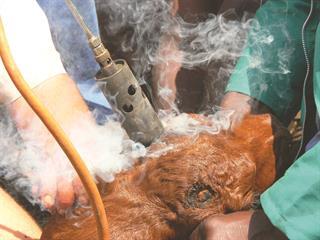
Photo: Bruce Joubert
One of the great inventions of the 20th century was without doubt the tractor. This powerful and versatile machine has revolutionised agriculture.
But advances made in its development have been so spectacular that they have in a sense blinded policymakers.
In the early 1950s, the hydraulic three-point hitch and power take-off saw tractors used more widely – to such an extent, it was believed that, ultimately, tractors would be used on all farms, large and small, worldwide.
Indeed, few farmers would not like to own a tractor; it has become a status symbol of farming.
Starting in the early 1960s, government-subsidised tractor projects were introduced in small-scale farming communities in South Africa, but did not prove successful. By the mid-1980s, policymakers were looking for an alternative.
Contractors
At first, it was decided to use private tractor contractors who would provide ploughing and other services to farmers for a fee.
Many government tractors were made available at low prices to entrepreneurs, who began to fill the role previously played by the government tractor schemes, but not at subsidised rates.
There are three main reasons that tractor schemes, whether government-subsidised or privately owned contractor-operated have largely proved unsuccessful: economic viability; the timeliness with which activities can be carried out; and the over-extension associated with using tractors.
This means the ploughing up of lands that are too large for the farmer to manage later.
The costs of ploughing are so high that it is often the only activity, a small-scale farmer can afford.
Subsequent activities such as harrowing, planting and weeding are carried out by the farmer himself using draft animal or man power.
A large land may be easily ploughed by a tractor, but to harrow, plant and weed it later without a tractor usually means that these activities, particularly that of weeding, cannot be carried out effectively or on time.
Both lose out
When considering the economic viability of using tractors, it should be remembered that government charges per hour are based on an annual hourly usage of 1 000 hours.
Surveys conducted throughout the Eastern Cape show that most tractor contractors perform fewer than 500 hours of productive work per annum.
This means that the recommended rates are below what these contractors should be charging.
But under dryland farming conditions, yields are low and emerging farmers cannot even afford to pay the standard government rates for ploughing alone.
As a result, the contractors end up charging less than they should, while the farmers pay more than they can afford. Both lose out.
In addition, farmers also have to wait in line to have their lands prepared for planting by contractors.
When the rains fall and ploughing is possible, there is a window of opportunity of a few weeks when the soil is moist enough to work and during which the contractors must complete the lands that need to be worked.
In many cases, however, farmers have not prepared their lands in time and therefore have to wait until the next rain falls.
In short, the farmer is invariably handicapped by having to rely on the contractor.
The alternative
Taking all these factors into consideration, it’s clear that, despite the spectacular performance of tractors on commercial farms, tractors generally disempower small-scale farmers.
Yet farm work is heavy and arduous, requiring long hours on the lands. To be productive, farmers cannot rely on manpower alone. They need another power source – such as draft animals.
Although generally considered a thing of the past, this age-old technology is still widely used in farming communities in South Africa and indeed throughout Africa.
It is an affordable, sustainable technology; one that, given the ever-increasing cost of tractors, spare parts and diesel, is becoming more and more attractive.
A farmer using draft animals can carry out all farming activities as effectively as with a tractor.
It may take longer, but he can still do all the activities on time, taking full advantage of the window of opportunity for planting at a cost that matches his pocket.
With draft animal power, an emerging farmer is master of his own destiny.
Tractors, of course, can be used where appropriate. Indeed, they can complement draft animals.
This is already happening on a number of progressive commercial farms – to reduce the rising costs of diesel, farmers are using draft animals to transport goods on the farm, to put down fertiliser and to weed row crops, while tractors are used for the heavy work.
Power on the farm is a major factor contributing to productivity. Agricultural policymakers, extension officers, trainers and researchers need to be aware of all the power options available.
With draft animals, a small step ‘backward’ will enable us to make several leaps forward.
Bruce Joubert is the former head of the erstwhile Animal Traction Centre at the University of Fort Hare.













